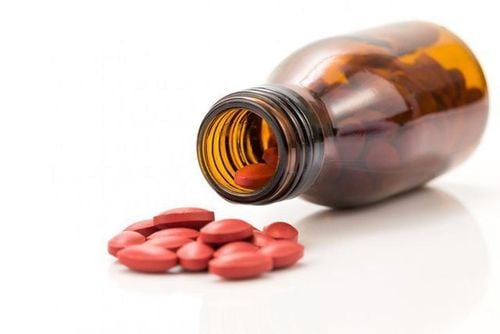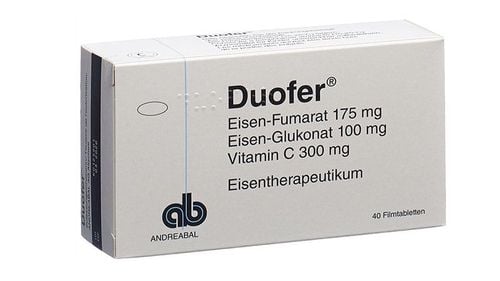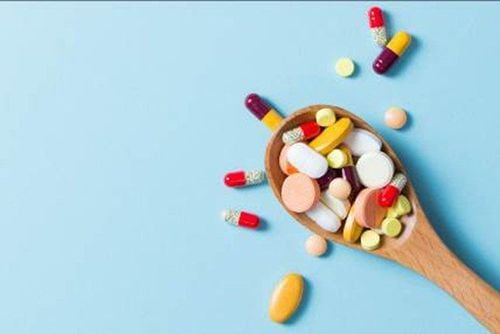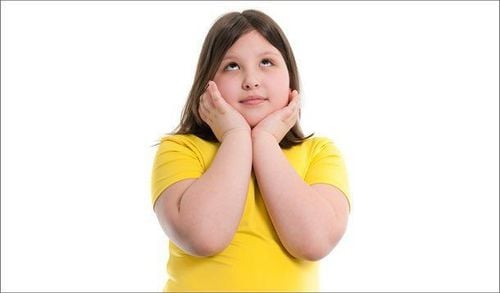This is an automatically translated article.
The article was consulted with Specialist II Chung Thi Mong Thuy - Pediatrician - Neonatologist - Department of Pediatrics - Neonatal, Vinmec Central Park International General Hospital.Iron deficiency anemia is a fairly common disease in children, the disease accounts for a relatively high rate. In Vietnam, according to the National Institute of Hematology and Blood Transfusion Research, the rate of anemia in children under 5 years old is 19.6%. The disease causes fatigue and reduces the ability to concentrate on learning, affects memory or many complications related to the function of important organs in the body such as the heart, kidneys, brain, mental.... The supplement Iron for babies with anemia plays an extremely important role in the formation and development of children.
1. Causes of iron deficiency anemia in children
According to the standards of the World Health Organization (WHO), children from 6 months to 6 years of age if the hemoglobin is less than 110g/liter, it is called anemia. For infants and young children, iron deficiency anemia is mainly due to the following causes:1.1 Decreased iron stores in the liver, bone marrow, spleen, and red blood cells The amount of iron in the fetus's body is not enough: Before the baby was born, in the mother's uterus, the fetus had a process of iron accumulation, the amount of iron storage of a normal, full-term infant is from 250 to 3,000mg, enough for the need for hematopoiesis 3 - 4 months postpartum. The amount of iron stored will not be enough due to premature babies, twins, mothers with poor nutrition, mothers who vomit a lot of iron pills during pregnancy or mothers with anemia during pregnancy, all of which are causes of children's problems. iron deficiency anemia.
1.2 Decrease supply, decrease absorption. Baby's growth rate is fast: Premature babies have faster growth rate, iron absorption is not enough, at this time the baby's main food is milk, but whether it is breast milk or cow's milk, the Iron levels are also low, unable to meet the baby's hematopoietic needs. Therefore, it is recommended to introduce solid foods to babies starting from 6 months of age. For children with iron deficiency anemia, it is necessary to add iron-rich foods to help avoid the risk of iron deficiency..
Poor child's diet, children do not eat meat, fish does not provide enough 4 groups of nutrients daily
In Some cases of gastrectomy, celiac disease, hypoplastic gastroenteritis...reduced iron absorption
1.3 Increase consumption, increase iron destruction Children have diseases such as bacterial infections, digestive tract diseases Chemicals, helminth infections... can all contribute to iron-deficiency anemia in children.
In many cases of children with mild iron deficiency anemia, the child has no obvious symptoms, sometimes the baby sweats every time he feeds or this month the baby is slow to gain weight, making parents not notice, until the stage of bleeding. If iron deficiency anemia is obvious, parents will see their children's skin pale, irritable, often fussy, easily irritated, older children have poor concentration, forgetfulness, and don't remember...
Schools Children with severe iron deficiency anemia can lead to symptoms of swelling in the hands and feet, tachycardia, heart failure, extracellular fluid retention, difficulty breathing... Children with iron deficiency anemia also have a behavioral disorder called “pica” in which children ingest foreign substances, such as dirt.
If you see that your child has abnormal signs as above, you should take your baby to a reputable medical facility for an overall nutritional examination to find the exact cause. When testing blood and analyzing blood components will give the most correct conclusions. If your child has iron-deficiency anemia as a result, the doctor will prescribe the right medication for your baby's condition.
Trắc nghiệm: Sự phát triển tinh thần, vận động của bé thế nào là đúng chuẩn?
Khi nào bé biết nói, biết hóng chuyện hay biết cầm cốc là "đúng chuẩn"? Điểm xem bạn biết được bao nhiêu mốc phát triển tinh thần, vận động "đúng chuẩn" của bé nhé!The following content is prepared under supervision of Thạc sĩ, Bác sĩ y khoa, Ma Văn Thấm , Nhi , Phòng khám Đa khoa Quốc tế Vinmec Dương Đông(Phú Quốc)
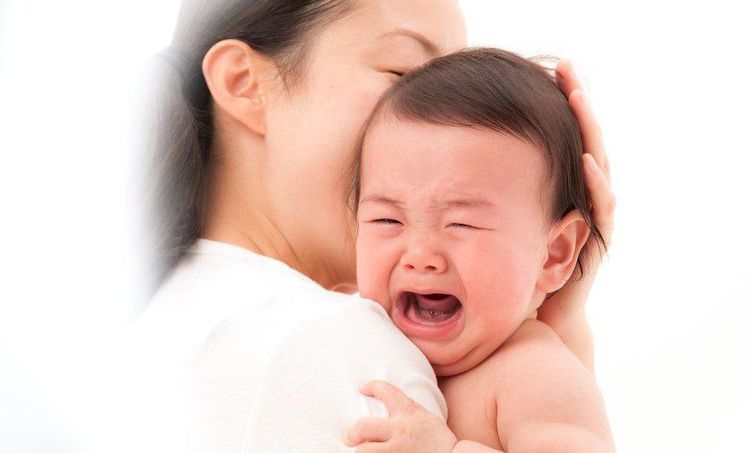
2. How much iron is enough for babies?
With a healthy full-term newborn, the amount of iron the baby accumulates from the mother during pregnancy is enough for the baby's needs in the first 6 months after birth. Therefore, children do not need iron supplements for children. Breastfeeding during this period is very important, because the iron in breast milk is easily absorbed. For premature infants, iron supplements should be added 2mg/kg daily, up to 15mg/day, starting at 2 weeks of age, lasting from 12-18 months depending on clinical assessment. More iron is provided through formula than in breast milk. If the child is exclusively breastfed, it is possible to give the child liquid iron supplements, syrup and solid foods starting from the 6th month. When the child is about 6 months old, it is necessary to introduce the baby to solid foods, it is best to start eating solids. Start with iron-rich foods. You can also take a daily liquid iron supplement, depending on your doctor's judgment, especially for children who can't eat solid foods yet. Children from 1 year of age and older should be given an iron-rich diet with enough cow's milk because cow's milk is not an iron-rich food for children.3. Food sources of iron supplements for babies
This is the most common and safest way to prevent and supplement iron for children, when children have mild iron deficiency. There are two types of iron-containing foods found in everyday foods:Iron in animal foods: commonly found in red meat (beef, pork, lamb...), seafood (fish) tuna, salmon, shrimp, crab, clams, oysters...), poultry, eggs and animal organs (liver, kidney). Iron in plant foods: present in dark green vegetables (spinach, water spinach, broccoli...), legumes, whole grains or dried fruits... Sources of iron Iron from plant foods will not be as well absorbed by the body as iron from animals. So if the child is a vegetarian, he or she is not getting enough iron. However, if used with foods rich in vitamin C (such as citrus, strawberries, papaya, broccoli ...) will contribute to help children increase iron supplementation for children. Foods high in vitamin C support iron absorption (found in grapefruit, oranges, lemons, guava, strawberries, longan, tangerines, peppers, tomatoes...).
4. Note when supplementing with iron for children with medicine
Children should only be supplemented with iron with medicine when prescribed by a doctor. Liquid and syrup forms are often more suitable for young children than other forms of medicine. Iron is maximally absorbed on an empty stomach. Therefore, iron tablets should be taken 1 hour before a meal, or 2 hours after a meal. If possible, you should give your baby vitamin C or foods rich in Vitamin C to increase absorption and supplement iron. In case, the child has stomach irritation due to taking iron on an empty stomach (abdominal pain, nausea, vomiting ...), can use the drug during or after meals, or start with a low dose, then increase gradually to the therapeutic dose. Some foods, can interact to reduce iron absorption such as milk, tea, coffee, coca and carbonated drinks... Therefore, it is recommended to limit the use of these foods 1 to 2 hours later. when adding iron to the baby. Liquid drugs, syrups have the ability to darken children's teeth when using drugs for a long time. You should instruct your child to rinse his mouth and brush his teeth after taking the medicine to reduce this unwanted effect. Medicines can cause black stools in children. However, this effect is not harmful. Some undesirable effects are more serious such as abdominal pain, constipation, diarrhea, nausea... If you have iron pills in your home, keep them out of reach of children, because iron is one of the causes. top drug poisoning. Acute manifestations of iron poisoning are usually vomiting, abdominal cramps, diarrhea, blood in the stool.... Later symptoms include blue lips, fingernails and palms, lethargy, and paleness. paleness, convulsions, rapid breathing, and vomiting. If this unfortunately happens, parents need to take the child to the nearest medical facility for timely emergency treatment.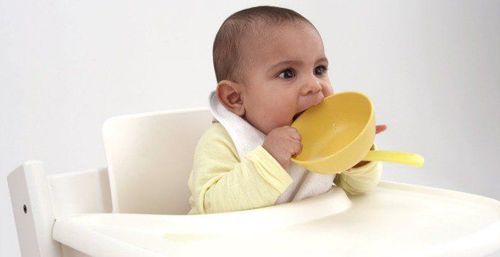
5. Prevention of iron deficiency anemia in children
Breastfeeding or using iron-fortified formula: The best and most easily absorbed iron for babies under 1 year of age is breast milk. You should breastfeed your baby exclusively for the first 6 months and continue breastfeeding for at least a year. Balanced diet: When your child can consume solid foods, choose iron-rich supplements for him, such as baby cereals. As children get older, good food sources of iron include dark green vegetables, fish, chicken, red meat, and beans.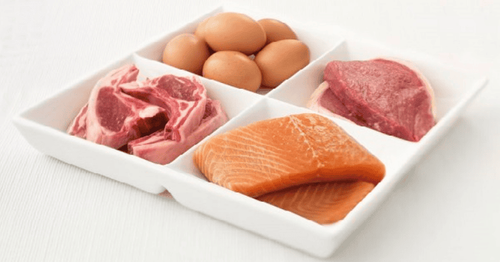
Please dial HOTLINE for more information or register for an appointment HERE. Download MyVinmec app to make appointments faster and to manage your bookings easily.
Article referenced source: National Institute of Nutrition





